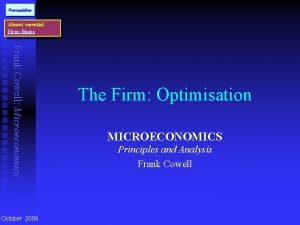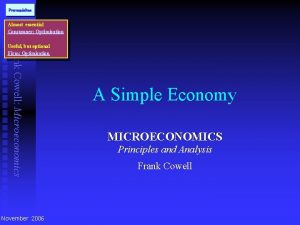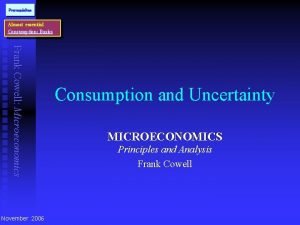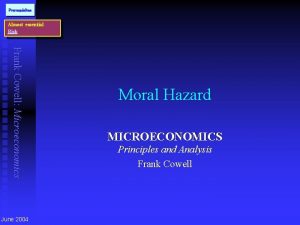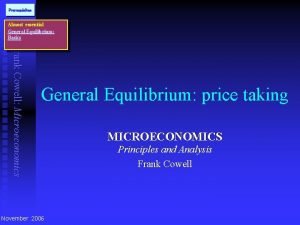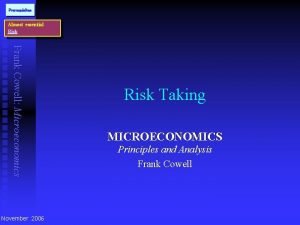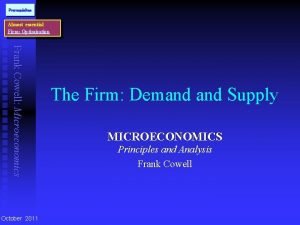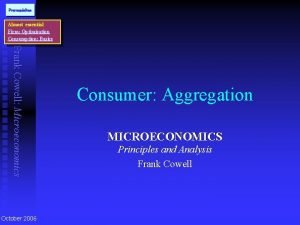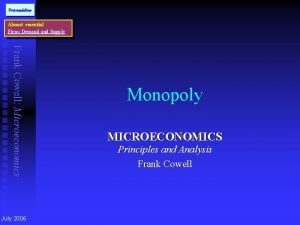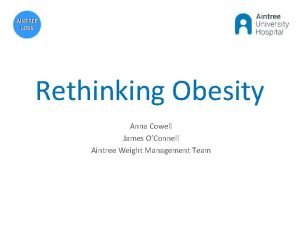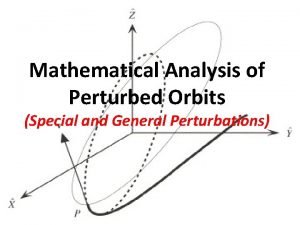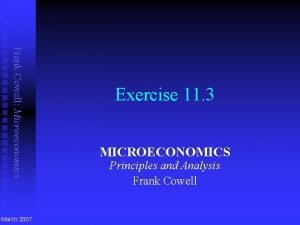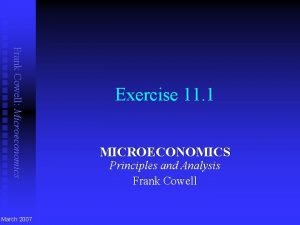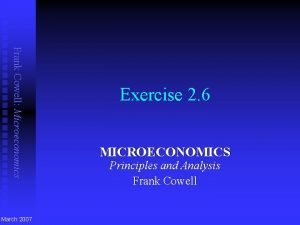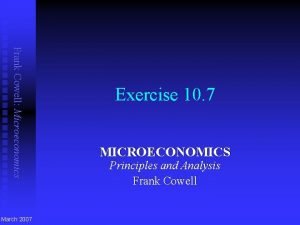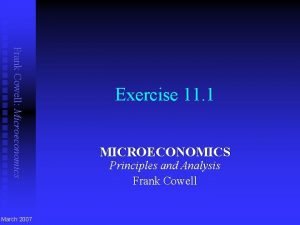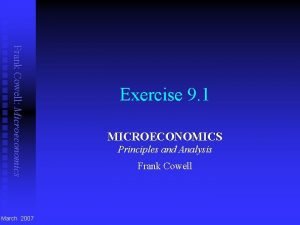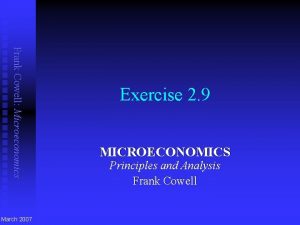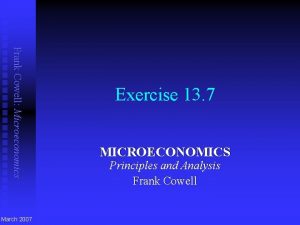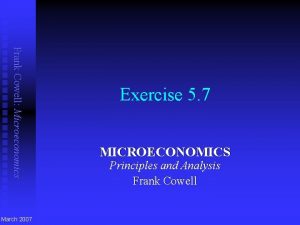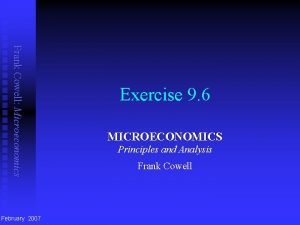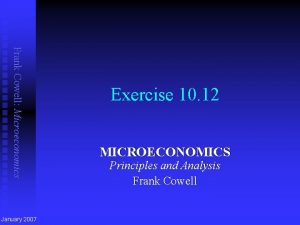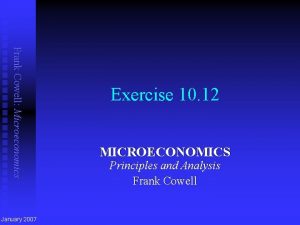Frank Cowell Microeconomics March 2007 Exercise 2 9














- Slides: 14

Frank Cowell: Microeconomics March 2007 Exercise 2. 9 MICROECONOMICS Principles and Analysis Frank Cowell

Ex 2. 9(1): Question Frank Cowell: Microeconomics n n purpose: demonstrate relationship between short and long run method: Lagrangean approach to cost minimisation. First part can be solved by a “trick”

Ex 2. 9(1): Long-run costs Frank Cowell: Microeconomics n Production function is homogeneous of degree 1 u u u n CRTS implies constant average cost u u u n increase all inputs by a factor t > 0 (i. e. z → tz)… …and output increases by the same factor (i. e. q → tq) constant returns to scale in the long run C(w, q) / q = A (a constant) so C(w, q) = Aq differentiating: Cq(w, q) = A So LRMC = LRAC = constant u Their graphs will be an identical straight line

Ex 2. 9(2): Question Frank Cowell: Microeconomics method: n Standard Lagrangean approach

Ex 2. 9(2): short-run Lagrangean Frank Cowell: Microeconomics n In the short run amount of good 3 is fixed u z 3 = `z 3 n Could write the Lagrangean as n But it is more convenient to transform the problem thus n where

Ex 2. 9(2): Isoquants Frank Cowell: Microeconomics n Sketch the isoquant map z 2 z 1 n n Isoquants do not touch the axes So maximum problem must have an interior solution

Ex 2. 9(2): short-run FOCs Frank Cowell: Microeconomics n Differentiating Lagrangean, the FOCS are n This implies n To find conditional demand function must solve for l u u use the above equations… …and the production function

Ex 2. 9(2): short-run FOCs (more) Frank Cowell: Microeconomics n Using FOCs and the production function: n This implies u n where This will give us the short-run cost function

Ex 2. 9(2): short-run costs Frank Cowell: Microeconomics n By definition, shortrun costs are: n This becomes n Substituting for k: n From this we get u SRAC: u SRMC:

Ex 2. 9(2): short-run MC and AC Frank Cowell: Microeconomics marginal cost average cost q

Ex 2. 9(3): Question Frank Cowell: Microeconomics method: n Draw the standard supply-curve diagram n Manipulate the relationship p = MC

Ex 2. 9(3): short-run supply curve Frank Cowell: Microeconomics §average cost curve §marginal cost curve p §minimum average cost §supply curve p q q

Ex 2. 9(3): short-run supply elasticity Frank Cowell: Microeconomics n Use the expression for marginal cost: Set p = MC for p ≥ p Rearrange to get supply curve n Differentiate last line to get supply elasticity n n

Ex 2. 9: Points to remember Frank Cowell: Microeconomics n n n Exploit CRTS to give you easy results Try transforming the Lagrangean to make it easier to manipulate Use MC curve to derive supply curve
